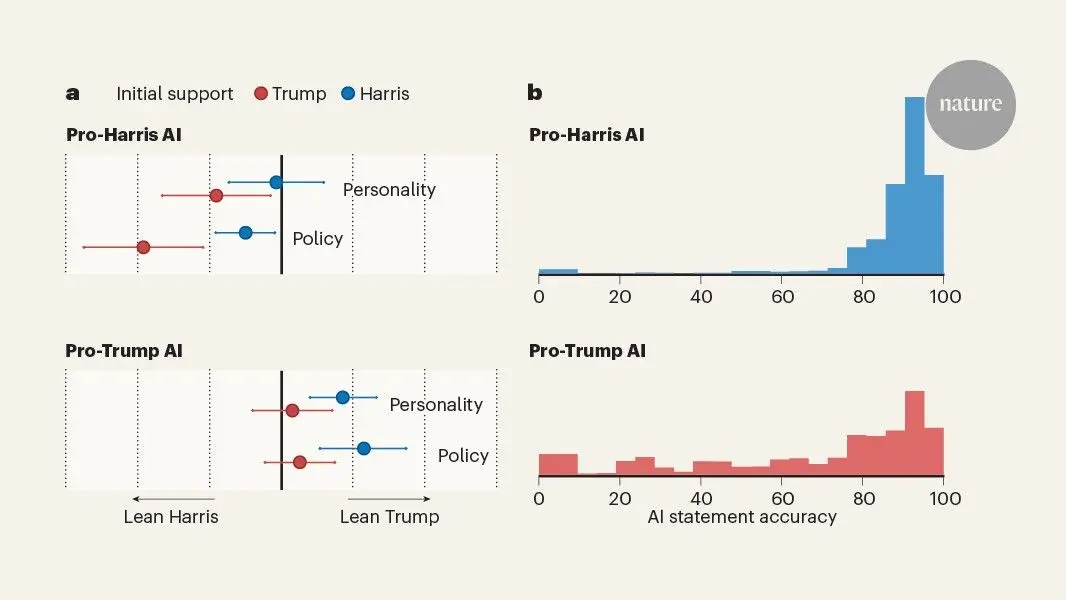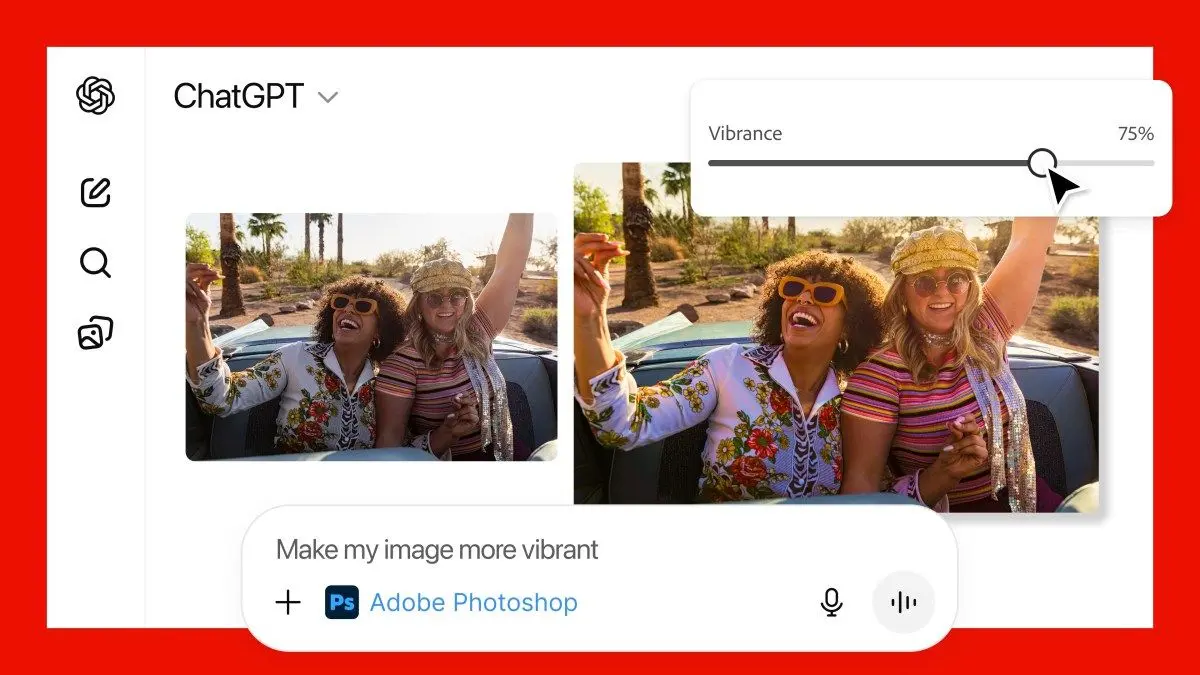Apple's New AI 'Clean Up' Tool Challenges Google's Magic Editor in Photo Editing
3 Sources
3 Sources
[1]
Can Apple's new AI photo 'Clean up' tool beat Google's Magic Editor? For some users, yes
On my iPhone, I used these rival tools to fix the busy backgrounds of some vacation pics. Compare the respective results here. A good camera, photo skills, and a worthy subject are only part of the equation when capturing the perfect photo. Some factors are out of your control, such as objects or people in the background that you can not move but are in the way of your perfect shot. That's where AI can help. With Monday's release of iOS 18.1, Apple introduced an AI-powered "Clean-up" feature, available in the editing section of the Photos library. With this feature, you can remove unwanted elements of a photo and seamlessly blend the background back in. Also: Apple just gave the MacBook Air a big performance upgrade - at no extra cost Although this is a new and exciting feature for iOS users, Google has had a similar feature, Magic Editor, available for Pixel phones since 2023. Google recently expanded its offering to all Google Photos users -- including iOS users. So, the question is: Was Apple's counterpart worth the wait? To find out, I tested both tools using photos -- from my recent trip -- in which removing something could improve my shot. The removals ranged from easier to more challenging, as seen from left to right. From a usage standpoint, I appreciated how easy it is to find the Clean Up tool; you don't need to search for anything or toggle. Rather, when you click to edit a photo, the tool is an option on the bar. Then, when you click on it, it automatically makes suggestions for what you should "clean up" and you can tap it to get rid of it. It doesn't, in every instance, identify what the objects are. For example, it did not see the sign in the first image, likely because it is so dark in the lower right corner. However, it did in the two other instances, even identifying both items in the third photo. The results were impressive -- I'd be comfortable sharing the edited versions of the photos on social media. If you zoom into the most challenging photo, you can see that the part of the rocks added on is a bit grainy compared to the rest, but it still looks realistic and not jarring. For iPhone users, the first step to using Magic Eraser may be inconvenient, as you need to download the Google Photos app. The good news is that it's free and offers other perks, such as photo storage and organization tools. I rely on the cloud storage offered by Google Photos because I take so many photos that I'm always running out of space on my phone. Once all your photos populate, you can click on the Edit button on the bottom bar, scroll over to Tools, and then click on Magic Eraser. This tool also has a feature that automatically selects what to remove, although it failed to identify the object in the first and last photos. The results of the two least challenging images were good, but the last one left much to be desired. Not only did it take a while to mark over the person (as it never recognized the object), but the results looked like a big blur. For iPhone users, the native experience of the Clean Up tool is not only more convenient but also yields better results. The tool is easier to access, better at identifying objects, and better at blending them into its background. Also: New mystery AI image generator bests Midjourney and DALL-E 3 - how to try it However, if you are an iPhone user who doesn't have access to Apple Intelligence, Google Photos is a great alternative as it generates comparable results and also has added benefits. Plus, downloading the free app is a lot easier on your wallet than shelling out the money for a new iPhone.
[2]
Clean Up vs Magic Eraser: I edited these images with Apple Intelligence and Google AI to see which is better
Apple is embarking on its own AI revolution with the broad release of Apple Intelligence courtesy of the official iOS 18.1 release this week. that update includes a feature called Clean Up with the Photos app, which uses AI to intelligently analyze photos and remove unwanted subjects from them -- all intuitively and with ease. My colleague Richard Priday was impressed by Clean Up's performance when he tested it out. This ability to remove objects from photos is nothing new, as some of the best phones with the Google Photos app can tap into Google's version called Magic Eraser. I've come to lean on Magic Eraser for the last several years, as that feature first arrived with the Pixel 6 and Pixel 6 Pro and has seen several updates since. But now that Apple has finally entered this arena, I want to see for myself if Apple Intelligence can legitimately do a better job of cleaning up my photos than Magic Eraser. Taking the same set of photos I've previously captured using different devices, I used their respective AI-assisted photo editing features to see which one does it best. Here's what I found. My beloved Andy the cat was playing around with my belt while he was on my bed, so I snapped this adorable picture of him tangled up with it using my Galaxy Z Fold 6. What's worth pointing out here is how much more intuitive it was using Clean Up on my iPhone 15 Pro to highlight the belt in one quick gesture, which then intelligently deletes it. With Magic Eraser, I just couldn't make the selection with one pass through -- so I had to piecemeal my selections before I got the belt entirely removed. There are things I love and hate about both photo edits. First of all, Clean Up removes the bedside lamp entirely from its spot, while the bed sheet directly to the left of Andy has an odd pattern. Meanwhile, Magic Eraser took me longer to remove the belt. In doing so, it warps Andy's ears in such a weird way, but at least it doesn't soften the areas of Andy's face that were covered by the belt. Despite this, the photo edited with Magic Eraser looks slightly more convincing as a whole. Winner: Magic Eraser I love testing some of the best electric cars around, and just a couple weeks ago, I was driving the new Acura ZDX Type S for a day -- so I snapped photos of it down the block at the beach's entrance. As is typical on most other sunny days, there were other people at the parking lot crowding my shot. Luckily, both AI-assisted photo editing tools helped out. Despite generating some odd artifacts where the black pickup truck was parked on the left side, Apple Intelligence's Clean Up feature again makes it a breeze to select those subjects I want removed, including the finer details like the wooden bases underneath the Acura ZDX. Magic Eraser better fills in the deleted areas, but in doing so warps the back bumper/ Again it's a tough one, but this time I'm picking Clean Up. Winner: Clean Up A few weeks back I was testing out the EcoFlow Power Hat to charge a Galaxy S24 Plus with nothing but solar power. While the beach was mostly desolate, there were still some things in the background that I wanted to remove in my selfie shot. For some reason, Clean Up was having a bit of trouble trying to recreate the horizon after I made my selections. Again, it was much more intuitive, but it made it look more like I was in a desert than a beach. In fact, the background appears more to be like a sand dune than anything else. That's why I prefer how Magic Eraser does it because it keeps the horizon flat, without distorting the nearby clouds. However, it took me a lot more time getting these results because I had to again piecemeal my selections. Winner: Magic Eraser During my test drive to upstate New York with the Honda Prologue, I stopped by with my colleague Marcus Cooper to check out what was formerly the world's largest garden gnome in Kerhonkson, NY. I caught this candid shot of Marcus taking video of the gnome statue with a DJI Pocket 3, but then used AI to remove him. This one's close because I'm impressed by how each AI-assisted photo editing tool works in removing him from the frame. I still cannot stress enough how quickly and easily I'm able to do it with Apple Intelligence's Clean Up feature because the end result you see took less than a few seconds -- which manages to blend the grass and shadow realistically. Google's Magic Eraser also produces a convincing edit, but once again I had to make numerous selections before I got Marcus removed. For this reason, I'm sticking with Cleap Up for its ease of use and accurate looking composition. Winner: Clean Up Just last month I was tearing it up on the Hudson River with a jetski to test out the new GoPro Hero 13 Black, so I ended up taking this photo of the Statue of Liberty with my iPhone. There were a bunch of us there and seeing it's a bit tough getting the jet skis to stay in one place, my good friend Ray Wong drifted into my shot. Luckily, both Clean Up and Magic Eraser are able to remove him with ease. Using one quick motion to circle with my finger of Ray on his jet skit, Apple Intelligence knows exactly what I'm trying to remove and does it for me. While it does produce a convincing shot, the dark shadow of the jet ski remains there. It's not a huge dealbreaker, but it doesn't mesh with the rest of the shot. In comparison, Magic Eraser does a much better job at masking it up -- even though I had to painstakingly make my selections multiple times before I got everything. Even though it takes longer, it's the end result that matters most here. Winner: Magic Eraser While this comparison between Clean Up and Magic Eraser is a win for Google, I know that it's only a matter of time before Apple's AI-assisted photo editing tool surpasses it. Make no mistake, the way Apple Intelligence knows what I'm trying to select is already ahead of Magic Editor -- plus it helps that it's a much more intuitive implementation. However, Apple still has a long road ahead before it catches up to Google's level. Why's that? Well, Google's AI-assisted features go beyond just removing objects from photos. Magic Editor uses generative AI to fill in blank spaces when a subject is moved or reframed in a shot, while other AI features like Best Take and Add Me show how AI is being adapted more into how photos are taken with the Pixel 9 Pro and 9 Pro XL. Apple's working hard in diversifying the features in Apple Intelligence. For example, the most recent iOS 18.2 developer beta finally unlocks Visual Intelligence to compete against Google Gemini. Either way, just know that AI is here to transform the way we use our phones.
[3]
Apple Intelligence for Photos Tested: Is It Better Than Google Photos?
I'm PCMag's managing editor for consumer electronics content, overseeing an experienced team of reviewers and product testers. I've been covering tech for more than 22 years. Prior to PCMag, I worked at outlets such as Android Authority, Fortune, InformationWeek, and Phonescoop. Apple Intelligence features are now available for select iPhones, iPads, and Macs. The list of tools in this first rollout is rather limited: You'll find some new writing functions, notification summaries, and a revitalized version of Siri, among a few other things. We're pretty excited about the changes to Apple Photos, which finally catches up to Google Photos to a degree. In iOS 18.1, Apple Photos gets a fresh design that surfaces new collections and is more customizable. Regarding AI, Apple says, "With Apple Intelligence, search for just about anything, remove visual distractions with a tap, and create the memories you want to see." Just how well does it work? And how does it stack up against Google Photos, which already offers many of these features? We put it to the test. Search If you're anything like me, you have tens of thousands of photos stored in your library. My Apple Photo library contains somewhere north of 70,000 photos, screenshots, and videos. Sorting through them to find the perfect photo can be a real pain -- but not with Apple Intelligence. One of Apple Intelligence's major benefits is its ability to parse natural language. This means you don't have to stick to the stultifying, robot-like syntax we've relied on when asking Siri to do anything in the past. Now, it's easier to find any photo or group of photos in your library. Open the Apple Photos app and tap the search icon at the top-right corner. A dialog box appears where you can type or speak your query. I started with, "Show me pictures of guitars." Because I attend a lot of rock concerts, Apple Photos surfaced hundreds of photos I've taken of people playing guitar. It also included a few photos I've taken of my own guitars. Neat! Subsequent searches for "The Empire State Building," "Show my photos from Lake Placid," and "Cars" turned up all the relevant images I've taken over the decades. Google Photos has been able to perform basic searches using the standard search bar for years, so you can type or speak simple queries like "cars" or "guitars" and get decent results. It now also supports natural language processing. I performed the exact same searches in Google Photos using a Pixel 9 Pro and got the same results as above. Create When it comes to creating, Apple Photos takes some cues from your searches. For example, atop the image results for my query about guitars, Apple Photos created several slideshows of photos I've taken at specific shows. Crazily enough, Apple Photos selected a track from fretboard wiz Joe Satriani to accompany the photo montage it created of Joe himself playing a show! A small tool at the bottom of the screen lets you comb through your music library to pick and choose your own soundtrack. Of course, sharing the Memory as a slideshow or video is just a tap away. Google Photos has had a similar feature for years. It culls your images in the background and presents them to you every so often when you open the app. For example, I recently visited a nature preserve in the New Jersey Meadowlands to take photos of birds. I uploaded some of my shots to Google Photos. A day or so later, I checked the Memories tab in Google Photos, and it had collected a number of the shots together and created a short slideshow, though without background music. Clean Up While those features are useful and fun, I suspect most people will enjoy "cleaning up" their photos. Apple Intelligence takes a page from Google's Magic Eraser tool with its Clean Up function. In the Photos app, open a photo you want to edit. The new Clean Up tool appears alongside the standard set of editing tools. Tap it, and Apple Photos demonstrates how to erase unwanted objects from the background by scribbling your finger over them. It also suggests items to erase by making them glow briefly, like someone's forearm that entered one of my shots and a bench that I hadn't noticed. Scribble away, and Apple Intelligence needs but a second or two to erase the object(s) and seamlessly fill in the background. It works like a charm. In fact, it feels slightly more polished than Google's Magic Eraser. I've seen Google's tool make a mess of the background, not erase the entire object or leave other traces that an edit was made. In the limited number of photos I edited, Apple Photos delivered cleaner results. If you like editing photos, this new tool is certainly going to help with some of your shots. Magic Eraser in Google Photos can take out larger objects than Apple Photos can, for the moment. Whichever you use, deleting stray people or garbage cans from the background makes your photos more enjoyable to share. iOS 18.1 is a free download. Later this year, Apple plans to add more features to Apple Intelligence through iOS 18.2, with more tools to follow in 2025.
Share
Share
Copy Link
Apple's iOS 18.1 introduces an AI-powered 'Clean Up' feature for photo editing, rivaling Google's Magic Editor. The new tool offers intuitive object removal and background blending, sparking comparisons in performance and user experience.

Apple Introduces AI-Powered 'Clean Up' Feature
Apple has entered the AI photo editing arena with its new 'Clean Up' feature, released as part of iOS 18.1. This tool, powered by Apple Intelligence, allows users to remove unwanted elements from photos and seamlessly blend the background
1
. The introduction of this feature puts Apple in direct competition with Google's Magic Editor, which has been available on Pixel phones since 2023 and recently expanded to all Google Photos users1
.User Experience and Functionality
The Clean Up tool is easily accessible within the Photos app's editing section. It automatically suggests elements to remove, allowing users to tap and eliminate unwanted objects quickly. This intuitive design has been praised for its ease of use compared to Google's Magic Eraser, which often requires multiple selections for object removal
2
.Performance Comparison
In various tests conducted by tech reviewers, Apple's Clean Up tool demonstrated impressive results:
- Object Removal: Clean Up effectively removed objects like belts, people, and vehicles from photos
2
. - Background Blending: The tool showed proficiency in blending edited areas with the surrounding background, though some instances of graininess were noted in challenging edits
1
. - Speed and Efficiency: Users reported faster editing processes with Clean Up compared to Magic Eraser
2
.
However, Magic Eraser still holds some advantages, particularly in handling larger objects and producing more convincing results in certain scenarios
2
.Related Stories
Additional AI Features in Apple Photos
Beyond Clean Up, Apple has introduced other AI-powered features to enhance the Photos app experience:
- Improved Search: Users can now use natural language to search for specific photos or groups of photos within their library
3
. - Smart Collections: The app now surfaces new collections and offers more customization options
3
. - Memory Creation: Apple Photos can create slideshows and video montages from searched images, complete with relevant music selections
3
.
Future Developments
While Apple's initial release of Clean Up has been well-received, the company plans to add more features to Apple Intelligence through future iOS updates. This ongoing development suggests that the competition between Apple and Google in AI-powered photo editing will continue to intensify, potentially leading to further innovations in the field
3
.References
Summarized by
Navi
[2]
Related Stories
Apple's AI Magic Editor: A Game-Changer for Photo Editing on iOS
30 Aug 2024

Google Introduces AI-Powered 'Ask Photos' Feature for Effortless Photo Editing on Pixel 10
21 Aug 2025•Technology

Apple Introduces 'Clean Up': An AI-Powered Photo Editing Tool Rivaling Google's Magic Eraser
29 Oct 2024•Technology

Recent Highlights
1
AI Chatbots Sway Voters More Effectively Than Traditional Political Ads, New Studies Reveal
Science and Research

2
Google AI glasses set to launch in 2026 with Gemini and Android XR across multiple partners
Technology

3
EU Launches Antitrust Probe Into Google's AI Training Practices and Content Usage
Policy and Regulation



